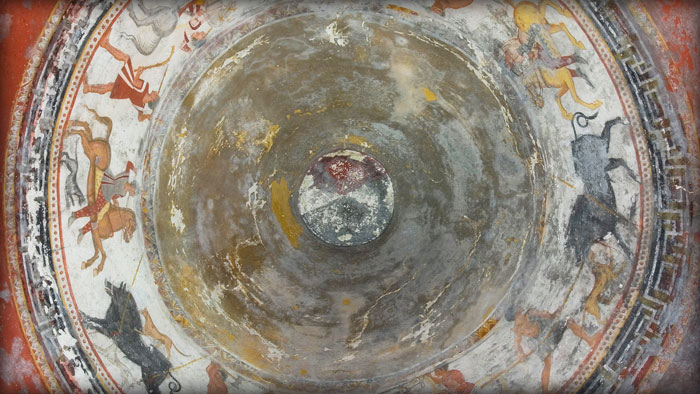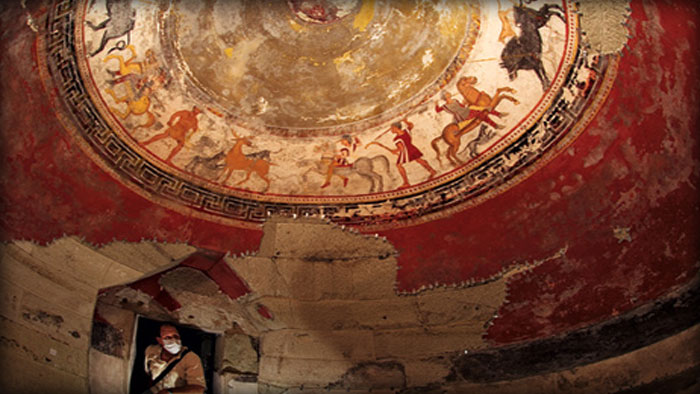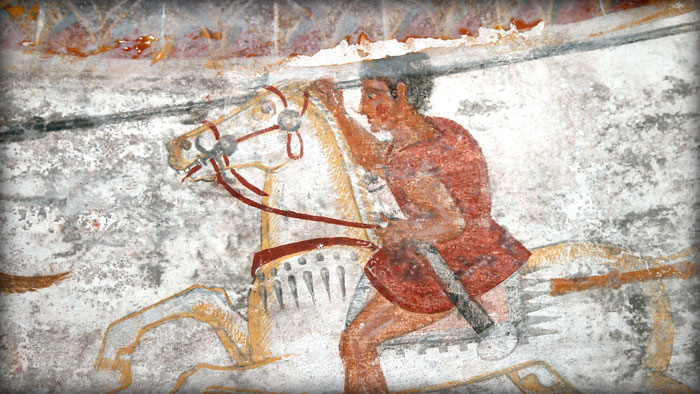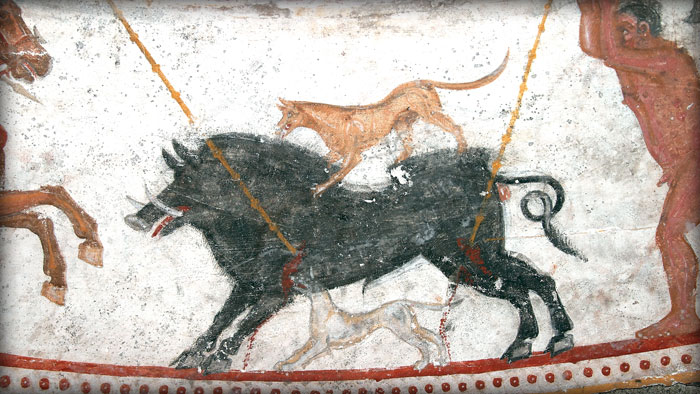The Dome
Tomb of Alexandrovo has a 15-meter long corridor. The entrance, whose facade was destroyed in antiquity, faces to the east. The corridor leads into a rectangular chamber. The roof structure is trapezoid shaped. The passage between the corridor and the vestibule is rectangular. The entrance leads to a round chamber, with a diameter of 3.30 m at the bottom and 3.40 m height.
In addition to their grace and realism, the six zones of rich murals decorating the tomb’s circular chamber refer to the fact that one of them has revealed one of the most intriguing and mysterious discovery in the tomb. It is about the richly decorated monochrome red zone, where there is a sharply incised image of a young man, in left profile. Above the portrait, there is a Greek inscription reading "Kodzimases Hrestos." According to the interpretation, the first word is a personal name of Thracian origin, while the second one is a nickname, which means capable, skilled or dextrous. Thus, the inscription can be interpreted as Kodzimases the Master, and the graphite image may be a portrait and autograph of the artist, who painted the tomb. The red zone is crowned by a geometric frieze of linked swastikas painted in white and black. Underneath it is bordered by Ionian cyma, and above – by a narrow white box dotted in red.
Immediately above follows the best preserved figured frieze, which depicts royal hunting scenes. Hunting is one of the most popular topics in Thracian art. It can be seen on dozens of monuments, ornaments, vessels, votive tablets, etc. In the cosmology of the ancient Thracians, the cosmologic order can be established through the victory over the chaos forces. Beating the boar - embodiment of chaos, the ruler restored the universal order and moved up to a new, higher status.

















